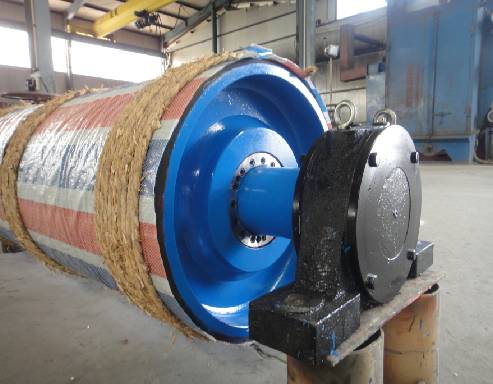 Afrikaans
Afrikaans  Albanian
Albanian  Amharic
Amharic  Arabic
Arabic  Armenian
Armenian  Azerbaijani
Azerbaijani  Basque
Basque  Belarusian
Belarusian  Bengali
Bengali  Bosnian
Bosnian  Bulgarian
Bulgarian  Catalan
Catalan  Cebuano
Cebuano  Corsican
Corsican  Croatian
Croatian  Czech
Czech  Danish
Danish  Dutch
Dutch  English
English  Esperanto
Esperanto  Estonian
Estonian  Finnish
Finnish  French
French  Frisian
Frisian  Galician
Galician  Georgian
Georgian  German
German  Greek
Greek  Gujarati
Gujarati  Haitian Creole
Haitian Creole  hausa
hausa  hawaiian
hawaiian  Hebrew
Hebrew  Hindi
Hindi  Miao
Miao  Hungarian
Hungarian  Icelandic
Icelandic  igbo
igbo  Indonesian
Indonesian  irish
irish  Italian
Italian  Japanese
Japanese  Javanese
Javanese  Kannada
Kannada  kazakh
kazakh  Khmer
Khmer  Rwandese
Rwandese  Korean
Korean  Kurdish
Kurdish  Kyrgyz
Kyrgyz  Lao
Lao  Latin
Latin  Latvian
Latvian  Lithuanian
Lithuanian  Luxembourgish
Luxembourgish  Macedonian
Macedonian  Malgashi
Malgashi  Malay
Malay  Malayalam
Malayalam  Maltese
Maltese  Maori
Maori  Marathi
Marathi  Mongolian
Mongolian  Myanmar
Myanmar  Nepali
Nepali  Norwegian
Norwegian  Norwegian
Norwegian  Occitan
Occitan  Pashto
Pashto  Persian
Persian  Polish
Polish  Portuguese
Portuguese  Punjabi
Punjabi  Romanian
Romanian  Russian
Russian  Samoan
Samoan  Scottish Gaelic
Scottish Gaelic  Serbian
Serbian  Sesotho
Sesotho  Shona
Shona  Sindhi
Sindhi  Sinhala
Sinhala  Slovak
Slovak  Slovenian
Slovenian  Somali
Somali  Spanish
Spanish  Sundanese
Sundanese  Swahili
Swahili  Swedish
Swedish  Tagalog
Tagalog  Tajik
Tajik  Tamil
Tamil  Tatar
Tatar  Telugu
Telugu  Thai
Thai  Turkish
Turkish  Turkmen
Turkmen  Ukrainian
Ukrainian  Urdu
Urdu  Uighur
Uighur  Uzbek
Uzbek  Vietnamese
Vietnamese  Welsh
Welsh  Bantu
Bantu  Yiddish
Yiddish  Yoruba
Yoruba  Zulu
Zulu Understanding the Impact of Drum Lagging on Industrial Processes and Efficiency
Understanding Drum Lagging A Vital Component of Industrial Operations
In numerous industrial settings, the efficiency and effectiveness of operations rely heavily on the appropriate management of various components. Among these components, drum lagging plays a crucial role, particularly within the field of conveyor systems. The term drum lagging refers to the process of applying a layer of material to the surface of a conveyor drum or pulley. This material often serves various functions, including increasing friction, enhancing durability, and minimizing wear.
One of the primary purposes of drum lagging is to improve traction between the conveyor belt and the drum. When the belt moves over a lagged drum, the added surface friction allows for a more efficient transfer of energy. This friction is essential for minimizing slippage, especially when the system operates under variable load conditions or at high speeds. Improved traction ultimately translates to enhanced system throughput and operational efficiency.
There are several materials commonly used for drum lagging, including rubber, ceramic, and specialized polymer composites
. Each material offers various advantages depending on the specific application requirements. For instance, rubber is widely used due to its excellent traction properties and resistance to wear. However, for high-temperature environments or applications that demand additional durability, ceramic lagging may be preferred because of its outstanding hardness and heat resistance.drum lagging

Another critical factor in choosing the right drum lagging material is its ability to withstand environmental conditions. In industries such as mining or metal processing, where extreme wear and tear is prevalent, the longevity of lagging materials can significantly impact maintenance costs and operational downtime. High-quality drum lagging can reduce the frequency of replacements, leading to savings over time and ensuring smoother operations.
It's also worth noting that proper installation and maintenance of drum lagging are essential to ensure its effectiveness. Poorly executed installation can lead to misalignment or uneven wear, compromising the system's functionality. Regular inspections and timely maintenance can help identify potential issues before they escalate, ensuring that the conveyor systems operate optimally.
Beyond technical considerations, drum lagging also serves safety purposes. In industries where heavy materials are transported, ensuring proper grip between the belt and drum can help prevent accidents such as belt slips, which could lead to unplanned stops or even catastrophic failures.
In conclusion, drum lagging is a fundamental aspect of conveyor system design and operation. Its role in enhancing traction, durability, and safety cannot be overstated. By selecting appropriate materials and ensuring proper installation and maintenance, industries can greatly improve their operational efficiencies and reduce downtime. As technology evolves, we can expect advancements in drum lagging materials and techniques, which will further drive improvements in industrial productivity and safety. Understanding drum lagging is not just about technical specifications—it's about the overall impact on operational efficiency and safety in the workplace.
-
Revolutionizing Conveyor Reliability with Advanced Rubber Lagging PulleysNewsJul.22,2025
-
Powering Precision and Durability with Expert Manufacturers of Conveyor ComponentsNewsJul.22,2025
-
Optimizing Conveyor Systems with Advanced Conveyor AccessoriesNewsJul.22,2025
-
Maximize Conveyor Efficiency with Quality Conveyor Idler PulleysNewsJul.22,2025
-
Future-Proof Your Conveyor System with High-Performance Polyurethane RollerNewsJul.22,2025
-
Driving Efficiency Forward with Quality Idlers and RollersNewsJul.22,2025





























